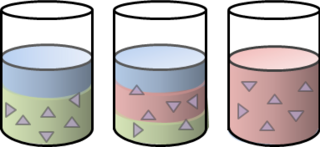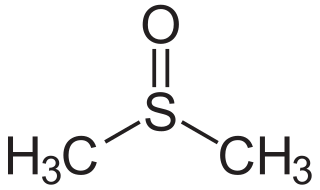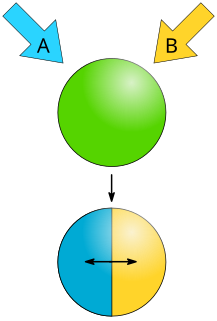 W
WA solvent is a substance that dissolves a solute, resulting in a solution. A solvent is usually a liquid but can also be a solid, a gas, or a supercritical fluid. Water is a solvent for polar molecules and the most common solvent used by living things; all the ions and proteins in a cell are dissolved in water within the cell.
 W
WAcetic acid, systematically named ethanoic acid, is an acidic, colourless liquid and organic compound with the chemical formula CH3COOH (also written as CH3CO2H, C2H4O2, or HC2H3O2). Vinegar is no less than 4% acetic acid by volume, making acetic acid the main component of vinegar apart from water and other trace elements.
 W
WAcetic anhydride, or ethanoic anhydride, is the chemical compound with the formula (CH3CO)2O. Commonly abbreviated ac2O, it is the simplest isolable anhydride of a carboxylic acid and is widely used as a reagent in organic synthesis. It is a colorless liquid that smells strongly of acetic acid, which is formed by its reaction with moisture in the air.
 W
W1,2-Butylene carbonate is an organic compound with formula C5H8O3, or (H5C2)(C2H3)(CO3). It is a double ester with the carbonate functional group bonded to both free ends of the 1,2-butylene group. It is also a heterocyclic compound with a five-membered ring, and can be seen as a derivative of dioxolane, specifically 4-ethyl-1,3-dioxolan-2-one.
 W
Wcis-2,3-Butylene carbonate is an organic compound with formula C5H8O3, or (H3C)2(C2H2)(CO3). It is an ester with a carbonate functional group bonded to both free ends of the cis-2,3-butylene group. It is also a heterocyclic compound with a five-membered ring containing two oxygen atoms, and can be viewed as a derivative of dioxolane, namely cis-4,5-dimethyl-1,3-dioxolan-2-one.
 W
Wtrans-2,3-Butylene carbonate is an organic compound with formula C5H8O3, or (H3C)2(C2H2)(CO3). It is an ester with a carbonate functional group bonded to both free ends of the trans-2,3-butylene group. It is also a heterocyclic compound with a five-membered ring containing two oxygen atoms, and can be viewed as a derivative of dioxolane, namely trans-4,5-dimethyl-1,3-dioxolan-2-one.
 W
Wγ-Butyrolactone (GBL) is a hygroscopic colorless, water-miscible liquid with a weak characteristic odor. It is the simplest 4-carbon lactone. It is mainly used as an intermediate in the production of other chemicals, e.g. methyl-2-pyrrolidone. In humans GBL acts as a prodrug for γ-hydroxybutyric acid (GHB), and it is used as a recreational CNS depressant with effects similar to those of barbiturates.
 W
WC4mim is a shorthand for 1-n-butyl-3-methylimidazolium salts. These are ionic liquids based on imidazole chemistry. A common example of such is [C4mim][Cl], or 1-n-butyl-3-methylimidazolium chloride. These salts are currently of interest in industry due to their ability to be infinitely recycled and their amenability to solvation at room temperature, making them excellent green solvents. C4mim is based on the parent compound 1-butyl-3-methylimidazole with one electron removed from the imidazole arene group. The stability of this cation lies in the fact that the resulting electronic vacancy is delocalised across the arene group, albeit unequally so.Chemical structure of 1-n-butyl-3-methylimidazolium chloride
 W
WCorexit is a product line of oil dispersants used during oil spill response operations. It is produced by Nalco Holding Company, an indirect subsidiary of Ecolab. Corexit was originally developed by the Standard Oil Company of New Jersey. Corexit is typically applied by aerial spraying or spraying from ships directly onto an oil slick. On contact with the dispersant, oil that would otherwise float on the surface of the water is emulsified into tiny droplets and sinks or remains suspended in the water. In theory this allows the oil to be more rapidly degraded by bacteria (bioremediation) and prevents it from accumulating on beaches and in marshes.
 W
WIn chemistry, cosolvents are substances added to a primary solvent in small amounts to increase the solubility of a poorly-soluble compound. Their use is most prevalent in chemical and biological research relating to pharmaceuticals and food science, where alcohols are frequently used as cosolvents in water to dissolve hydrophobic molecules during extraction, screening, and formulation. Cosolvents find applications also in environmental chemistry and are known as effective countermeasures against pollutant non-aqueous phase liquids, as well as in the production of functional energy materials and synthesis of biodiesel.
 W
WDiethyl sulfide is an organosulfur compound with the chemical formula (C2H5)2S. It is a colorless, malodorous liquid. Although a common thioether, it has few applications.
 W
WDihydrolevoglucosenone (Cyrene) is a bicyclic, chiral, seven-membered heterocyclic cycloalkanone which is a waste derived and fully biodegradable aprotic dipolar solvent. It is a environmentally friendly alternative to dimethylformamide (DMF) and N-methyl-2-pyrrolidone (NMP).
 W
WDimethyl sulfoxide (DMSO) is an organosulfur compound with the formula (CH3)2SO. This colorless liquid is an important polar aprotic solvent that dissolves both polar and nonpolar compounds and is miscible in a wide range of organic solvents as well as water. It has a relatively high boiling point. DMSO has the unusual property that many individuals perceive a garlic-like taste in the mouth after contact with the skin.
 W
W1,3-Dimethyl-2-imidazolidinone (DMI) is a cyclic urea used as a high-boiling polar aprotic solvent. It is colourless, highly polar solvent has high thermal and chemical stability. It is a homolog of the related solvent DMPU. It can be prepared from 1,2-dimethylethylenediamine by reaction with phosgene.
 W
WN,N′-Dimethylpropyleneurea (DMPU) is a cyclic urea sometimes used as a polar, aprotic organic solvent. In 1985, Dieter Seebach showed that it is possible to replace the suspected carcinogen hexamethylphosphoramide (HMPA) with DMPU.
 W
WEpichlorohydrin is an organochlorine compound and an epoxide. Despite its name, it is not a halohydrin. It is a colorless liquid with a pungent, garlic-like odor, moderately soluble in water, but miscible with most polar organic solvents. It is a chiral molecule generally existing as a racemic mixture of right-handed and left-handed enantiomers. Epichlorohydrin is a highly reactive electrophilic compound and is used in the production of glycerol, plastics, epoxy glues and resins, epoxy diluents and elastomers.
 W
WFormic acid, systematically named methanoic acid, is the simplest carboxylic acid, and has the chemical formula H2CO2. It is an important intermediate in chemical synthesis and occurs naturally, most notably in some ants. The word "formic" comes from the Latin word for ant, formica, referring to its early isolation by the distillation of ant bodies. Esters, salts, and the anion derived from formic acid are called formates. Industrially, formic acid is produced from methanol.
 W
WHexafluorobenzene, HFB, C6F6, or perfluorobenzene is an organic, aromatic compound. In this derivative of benzene all hydrogen atoms have been replaced by fluorine atoms. The technical uses of the compound are limited, although it is recommended as a solvent in a number of photochemical reactions. In the laboratory hexafluorobenzene is used as standard in fluorine-19 NMR spectroscopy, solvent and standard in carbon-13 NMR, solvent in proton NMR, solvent when studying some parts in the Infrared and solvent in Ultraviolet–visible spectroscopy, as hexafluorobenzene itself hardly shows any absorbance in the UV region.
 W
WHexamethylphosphoramide, often abbreviated HMPA, is a phosphoramide (an amide of phosphoric acid) with the formula [(CH3)2N]3PO. This colorless liquid is a useful reagent in organic synthesis.
 W
WLimonene is a colorless liquid aliphatic hydrocarbon classified as a cyclic monoterpene, and is the major component in the oil of citrus fruit peels. The D-isomer, occurring more commonly in nature as the fragrance of oranges, is a flavoring agent in food manufacturing. It is also used in chemical synthesis as a precursor to carvone and as a renewables-based solvent in cleaning products. The less common L-isomer is found in mint oils and has a piny, turpentine-like odor. The compound is one of the main volatile monoterpenes found in the resin of conifers, particularly in the Pinaceae, and of orange oil.
 W
W3-Mercaptopropane-1,2-diol, also known as thioglycerol, is a chemical compound and thiol that is used as a matrix in fast atom bombardment mass spectrometry and liquid secondary ion mass spectrometry.
 W
W1-Methylimidazole or N-methylimidazole is an aromatic heterocyclic organic compound with the formula CH3C3H3N2. It is a colourless liquid that is used as a specialty solvent, a base, and as a precursor to some ionic liquids. It is a fundamental nitrogen heterocycle and as such mimics for various nucleoside bases as well as histidine and histamine.
 W
WNon-methane volatile organic compounds (NMVOCs) are a set of organic compounds that are typically photochemically reactive in the atmosphere - marked by the exclusion of methane. NVMOCs include a large variety of chemically different compounds, such as benzene, ethanol, formaldehyde, cyclohexane, 1,1,1-trichloroethane and acetone.
 W
WPhase separation is the creation of two distinct phases from a single homogeneous mixture. The most common type of phase separation is between two immiscible liquids such as oil and water. Colloids are formed by phase separation, though not all phase separation forms colloids - for example oil and water can form separated layers under gravity rather than remaining as microscopic droplets in suspension.
 W
WReactive diluents are substances which reduce the viscosity of a lacquer for processing and become part of the lacquer during its subsequent curing via copolymerization.
 W
WSolventogenesis is the biochemical production of solvents by Clostridium species. It is the second phase of ABE fermentation.
 W
WThiodiglycol, or bis(2-hydroxyethyl)sulfide (also known as 2,2-thiodiethanol or TDE), is the organosulfur compound with the formula S(CH2CH2OH)2. It is miscible with water and polar organic solvents. It is a colorless liquid. Thiodiglycol is manufactured by reaction of 2-chloroethanol with sodium sulfide. It is structurally similar to diethylene glycol.
 W
WTributyl phosphate, known commonly as TBP, is an organophosphorus compound with the chemical formula (CH3CH2CH2CH2O)3PO. This colourless, odorless liquid finds some applications as an extractant and a plasticizer. It is an ester of phosphoric acid with n-butanol.
 W
WTricresyl phosphate (TCP), is a mixture of three isomeric organophosphate compounds most notably used as a fire retardant and in manufacturing for lacquers and varnishes as a plasticizer. It is a colorless, viscous liquid, although commercial samples are typically yellow. It is virtually insoluble in water, but easily soluble in organic solvents like toluene, hexane, and diethylether among others. It was synthesized by Alexander Williamson in 1854 upon reacting phosphorus pentachloride with cresol, though today's manufacturers can prepare TCP by mixing cresol with phosphorus oxychloride or phosphoric acid as well. TCP, especially the all-ortho isomer, is the causative agent in a number of acute poisonings. Its chronic toxicity is also of concern. The ortho-isomer is rarely used on its own due to its extremely toxic nature outside of laboratory studies that require isomeric purity, and is generally excluded from commercial products where TCP is involved.
 W
WTriethyl borate is a colorless liquid with the formula B(OCH2CH3)3. It is an ester of boric acid and ethanol. It has few applications.
 W
WTriethyl phosphate is a chemical compound with the formula (C2H5)3PO4 or OP(OEt)3. It is a colorless liquid. It is the triester of ethanol and phosphoric acid and can be called "phosphoric acid, triethyl ester".
 W
WTrimethyl borate is the organoboron compound with the formula B(OCH3)3. It is a colourless liquid that burns with a green flame. It is an intermediate in the preparation of sodium borohydride and is a popular reagent in organic chemistry. It is a weak Lewis acid (AN = 23, Gutmann-Beckett method).
 W
WTrimethyl phosphate is the trimethyl ester of phosphoric acid. It is a colourless, nonvolatile liquid. It has some specialized uses in the production of other compounds.
 W
Wγ-Valerolactone (GVL) is an organic compound with the formula C5H8O2. This colourless liquid is one of the more common lactones. GVL is chiral but is usually used as the racemate. It is readily obtained from cellulosic biomass and is a potential fuel and green solvent.